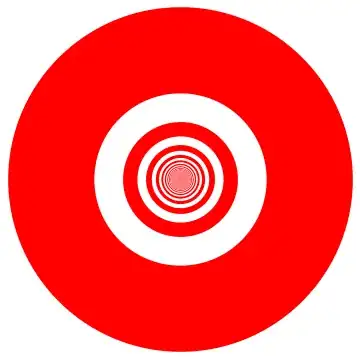If $n$ is a non zero positive number I write $K^{1/n}$ for the disc centered at the origin of $\mathbb{R}^2$ with radius $1/n.$ I construct an infinite arrangement of concentric discs centered at the origin using $K^{1/n}$ for each $n.$ I denote this arrangement by $BK.$ I set $A_{BK}=\sum_{n=1}^\infty(-1)^{n+1}\text{area}(K^{1/n}).$ I believe I have correctly that:
\begin{align} A_{BK}&=\sum_{n=1}^\infty(-1)^{n+1}\text{area}(K^{1/n})\\ &=\pi\sum_{n=1}^\infty(-1)^{n+1}\bigg(\frac{1}{n}\bigg)^2\\ &=\pi\eta(2)\\ &=\frac{\pi^3}{12} \end{align}
where $\eta$ is the Dirichlet eta function. $A_{BK}$ is the infinite analogue of the "area between two discs" and so geometrically we can think of ${\pi^3 \above 1.5pt 12}$ as the "area between infinitely many discs."
Questions: Can we construct an integral (possibly a multiple integral) to calculate $A_{BK}$ ?
The picture below should help. We are adding up the red shaded areas.
